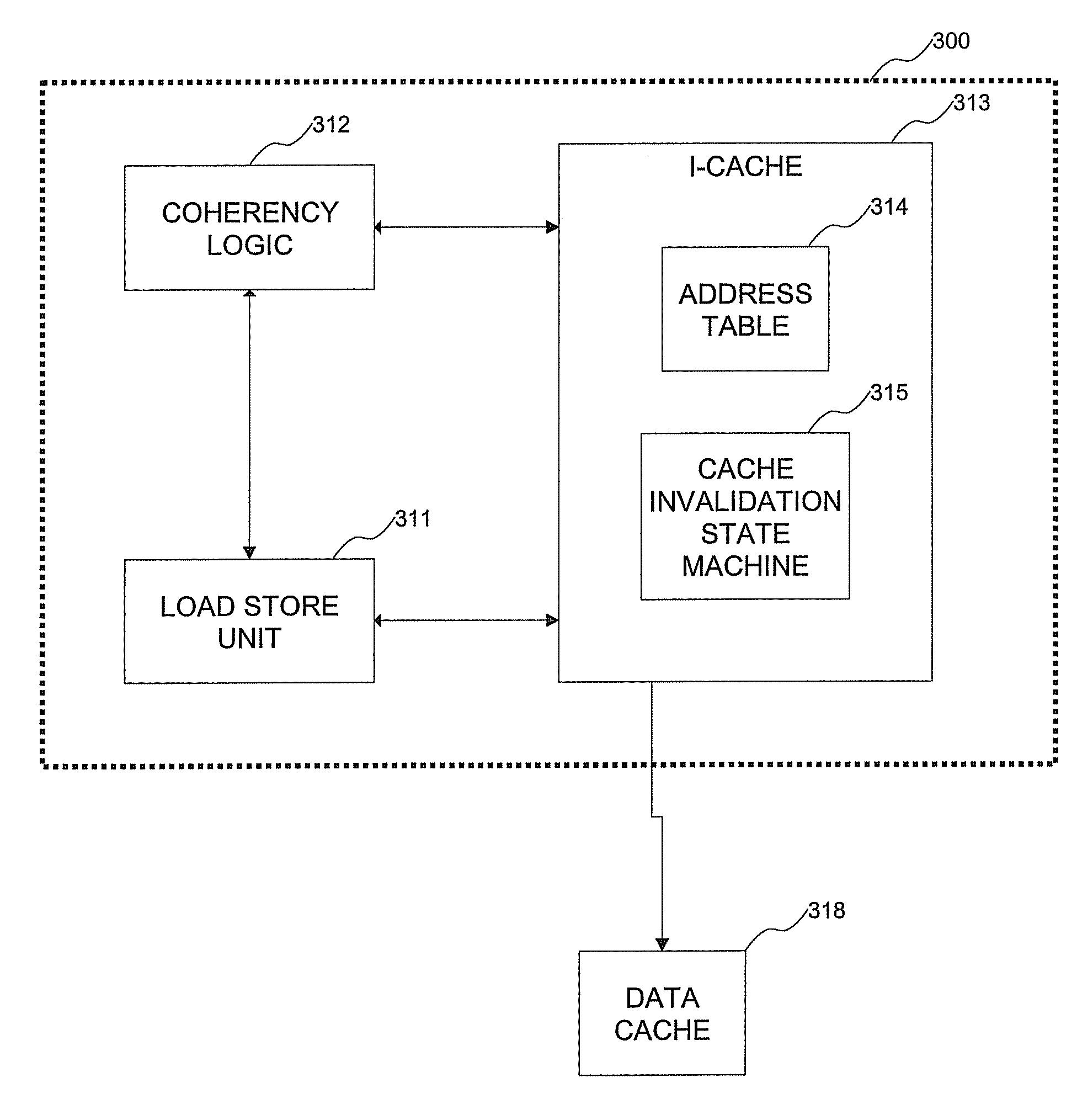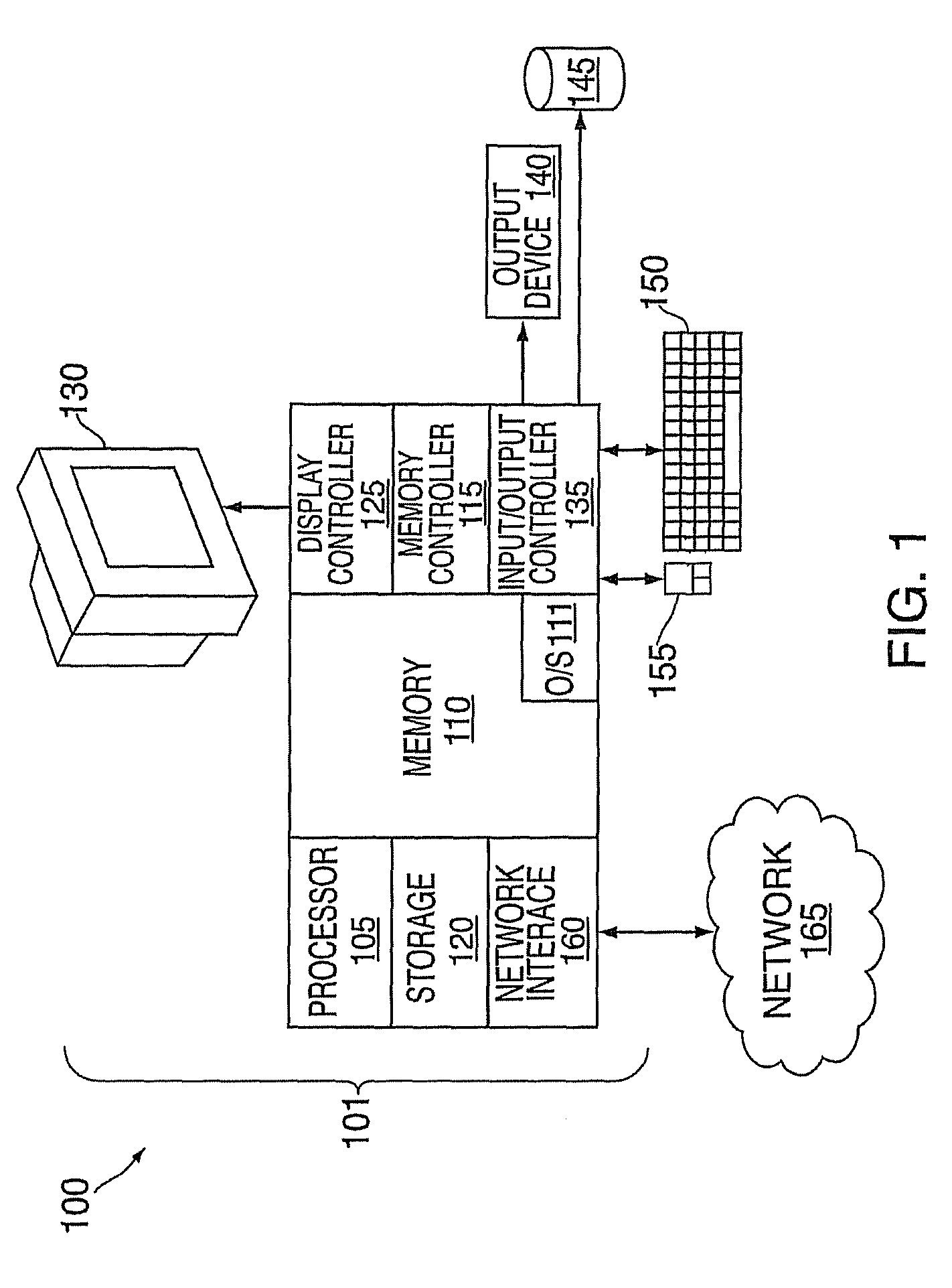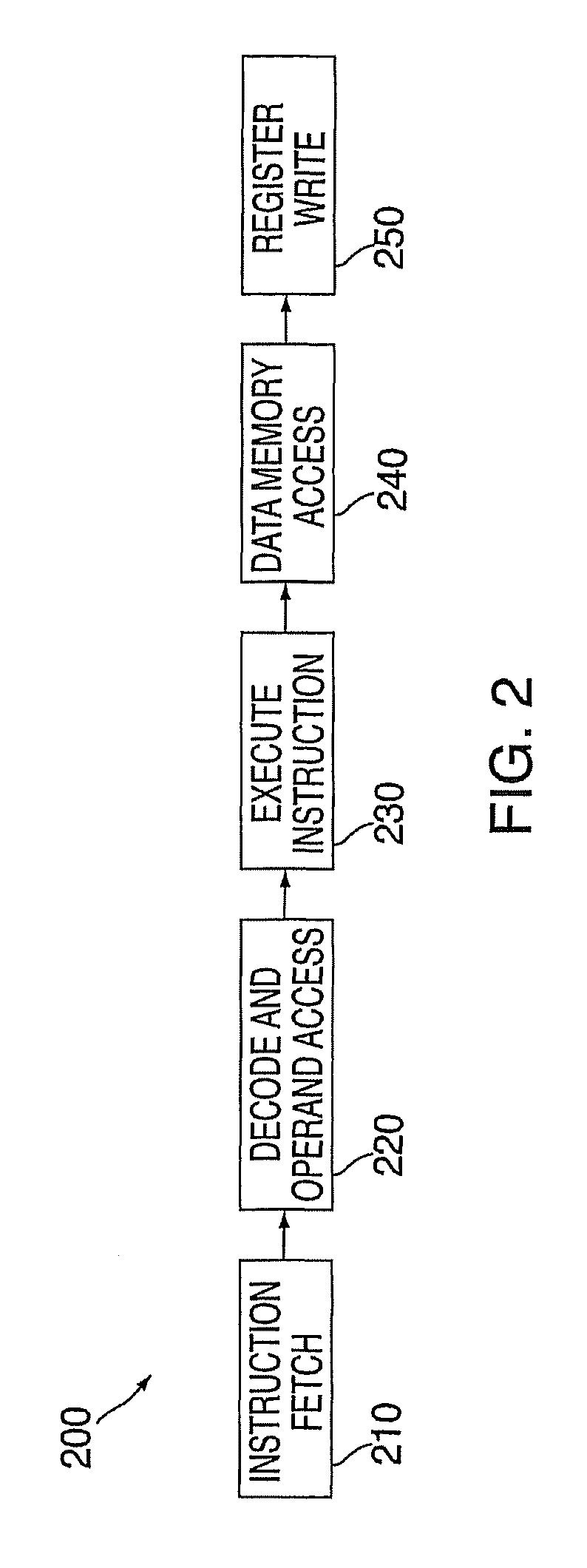Method and system for handling cache coherency for self-modifying code
a self-modifying code and cache technology, applied in computing, instruments, electric digital data processing, etc., can solve the problems of special cache problems for modern microprocessors, lack of necessary information in cache, and difficulty in special psc bus timing paths
- Summary
- Abstract
- Description
- Claims
- Application Information
AI Technical Summary
Benefits of technology
Problems solved by technology
Method used
Image
Examples
Embodiment Construction
[0016]An improved program-store-compare (PSC) design is provided in accordance with exemplary embodiments. The design provides a special PSC tag that is sent from coherency handling logic to an instruction cache along with a cache invalidation request that may be a part of normal coherency handling when a load store unit (LSU) performs an exclusive fetch for a cache line to be stored. This invalidation request is sent within a minimum amount of time before the data associated with the request is allowed to be returned to the LSU. The instruction cache performs a fast-path check against an instruction address table and sends a PSC ‘found’ or ‘hit’ indication, along with the PSC tag, within a fixed maximum amount of time, early enough for the LSU to know that prefetched instructions are to be discarded after the exclusively fetched cache line is stored.
[0017]Turning now to FIG. 1, a system 100 upon which the program store compare (PSC) processes may be implemented in accordance with a...
PUM
 Login to View More
Login to View More Abstract
Description
Claims
Application Information
 Login to View More
Login to View More - R&D
- Intellectual Property
- Life Sciences
- Materials
- Tech Scout
- Unparalleled Data Quality
- Higher Quality Content
- 60% Fewer Hallucinations
Browse by: Latest US Patents, China's latest patents, Technical Efficacy Thesaurus, Application Domain, Technology Topic, Popular Technical Reports.
© 2025 PatSnap. All rights reserved.Legal|Privacy policy|Modern Slavery Act Transparency Statement|Sitemap|About US| Contact US: help@patsnap.com



